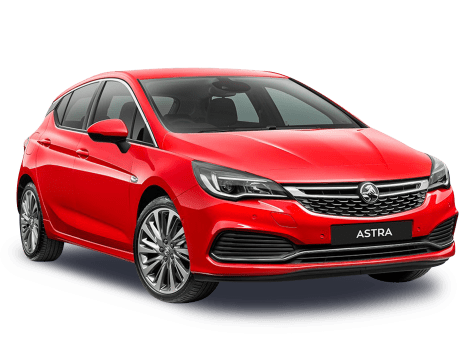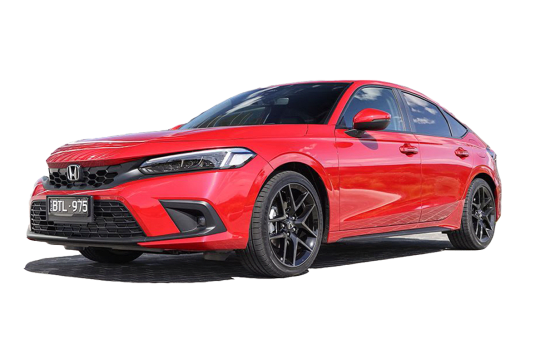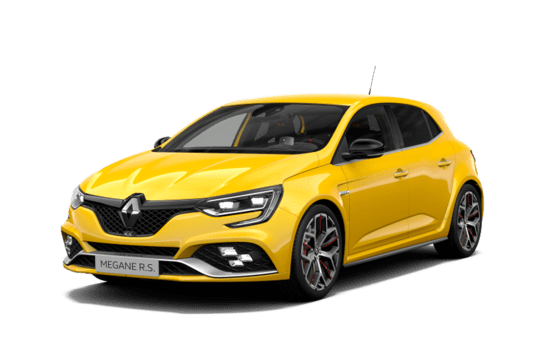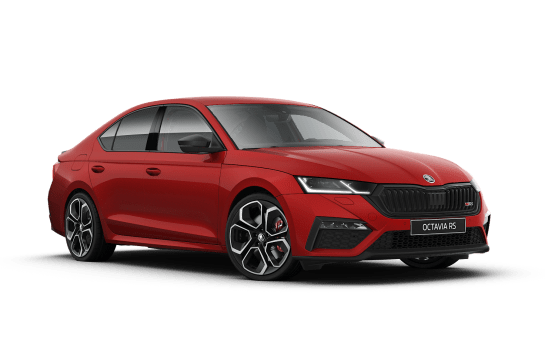
Hyundai Accent VS Fiat 500
Hyundai Accent
Likes
- Big alloys and new nose make it better looking
- Phone integration unlocks Apple/Google Maps
- Plenty of useable torque from 1.6-litre engine
Dislikes
- Suspension can be jarring occasionally
- Lacks refinement outside of the city
- Standard safety package lacking
Fiat 500
Likes
- Looks great
- Nippy performance
- Quick charge times
Dislikes
- Modest rear room
- Sub-par safety rating
- Sub-par warranty
Summary
Hyundai Accent
While there are plenty of things that somehow improve with age (art, wine, the seemingly ageless Will Smith, to name but a few), the Hyundai Accent is sadly not one of them.
But then, neither does almost any new cars. With new technology, entertainment and safety features launching daily, and with engines that are getting cleaner, more efficient and smoother all the time, a once all-new model can be left looking positively antique in just a handful of years.
But it’s definitely even worse than normal over at Hyundai; the Korean manufacturer that continues to make great forward strides with every new model. From the members of its fast and frantic N Division to its polished SUVs, to the all-new i30 small car, Hyundai is going from strength to strength with neck-breaking speed.
All of which creates a little problem for the pint-sized Accent, which - having launched back in 2011 - is now starting to feel its age. And unlike the Fresh Prince, it isn’t holding up quite so well.
So in lieu of an all new version, Hyundai streamlined the existing Accent family into one value-packed model in 2017, taking the axe to the Active and SR models and replacing both with a single, Sport trim level, which is available in sedan and hatchback guise.
And in creating the Sport, Hyundai aims to blend the best of the Accent range into one handy package. So have they taught this old dog new tricks?
| Safety rating | |
|---|---|
| Engine Type | 1.6L |
| Fuel Type | Regular Unleaded Petrol |
| Fuel Efficiency | 6.3L/100km |
| Seating | 5 seats |
Fiat 500
If ever there was a car that looked ready for electrification from the moment it took shape in the design studio, it was the ‘new’ Fiat 500.
Arriving in 2007, it was up there with the best retro-inspired automotive designs in capturing the spirit of the original it’s based on, and EV power feels instinctively right for its next evolution.
On sale in Europe since 2020, this all-new 500e is the Italian maker’s first ever EV coming to Australia, and it will arrive in July this year.
We grabbed the opportunity of a brief pre-release drive in Fiat’s home of Turin, Italy.
Read more about
- Fiat 500e EV is finally here! But can it compete with BYD Atto 3, MG ZS EV and Nissan Leaf electric cars?
- Fiat CEO wants to dominate small electric car segment, starting with Fiat and Abarth 500e - report
- Can an affordable electric car save Fiat? Why the 2023 500e is the final hope for the Italian brand in Australia | Opinion
| Safety rating | — |
|---|---|
| Engine Type | — |
| Fuel Type | Electric |
| Fuel Efficiency | —L/100km |
| Seating | 4 seats |
Verdict
Hyundai Accent 6.8/10
It might be getting harder and harder to hide its age, but there is still plenty to like about Hyundai's cheapest car. Those who really love to drive need not apply, and nor should long-distance travellers, but the Accent Sport's alloy wheels, true smartphone integration and plenty of power and USB points will thrill its younger owners, while its long-range warranty and cheap servicing costs don't hurt either.
Still, if you think you can stretch to an i30, you should definitely drive one first.
Would you opt for a Hyundai Accent Sport, or step up to an i30? Tell us what you think in the comments below.
Fiat 5007.4/10
It feels like the Fiat 500 is coming of age in this new-generation EV form. Electric power perfectly suits this compact hatch’s unique personality. It’s comparatively well priced and the design shouts Italian cool. It’s a niche model, but the 500e’s undoubted charisma could broaden its appeal as electric vehicle adoption begins to pick up pace.
Note: CarsGuide attended this event as a guest of the manufacturer, with travel, accommodation and meals provided.
Design
Hyundai Accent 7/10
It looks good, the Accent, just not quite as good as its bigger Hyundai brothers. And that’s got to sting, if only a little bit.
Words like "subtle", "restyled” and “enhanced design” pepper the Accent’s media information, and so we’re not talking massive changes. But the exterior of the Sport looks sharp, especially in the 'Pulse Red' of our test car. Other colours include 'Chalk White', 'Lake Silver', 'Phantom Black', 'Sunflower' (yellow), and 'Blue Lagoon', but there’s no green, orange or grey paint available.
First, though, don’t let the whole 'sport' thing fool you. You’ll find no Fast and Furious body kit, nor is there much in terms of a rear spoiler, side skirts or a rear diffuser. Instead, a silver-framed mesh grille (a smaller version of the one that adorns the i30) blends into the headlights that then sweep back into the body, while subtle power lines create a little dome in the bonnet, starting at the edges of the Hyundai badge and getting wider as they sweep back across the bonnet.
Side on, the alloys are clean and simple, and a single style crease runs the length of the body, intersecting both door handles on each side. At the rear, though, the concave body styling doesn’t quite work so well, ending up looking busier than the rest of the car, and leaving it with too much body and not enough rear window.
Inside, as you can see from our interior photos, there is plenty of hard plastic, but there have been some design flourishes that give them a nicer texture and go some way to disguising the fact they’re hard enough to be used as a weapon in a roadside road rage dispute.
But it’s a simple and clean design, with patterned cloth (what, you were expecting leather seats at this price point?) seats, an uncluttered centre cluster and a sparing use of silver highlights that break up the black of the dash and doors.
You can also option everything from tailored floor mats to interior lighting, forming a kind of personalised premium package for the Accent Sport.
Fiat 500
In its latest electronic guise, the 500e stays loyal to its 1950s cinquecento roots, with the addition of contemporary touches like this distinctive split headlight and DRL design, beautiful 17-inch alloys that look like they’ve come out of a jewellery box, and a simple, curved rear end treatment with classic 500-style LED tail-lights.
There are six colours to choose from, with ‘Ice White’ being the only no-cost option. Premium shades - ‘Onyx Black’, ‘Ocean Green’, ‘Mineral Grey’ and ‘Rose Gold’ cost $700 extra, while the ‘Tri-coat’ ‘Celestial Blue’ adds $1600 to the price.
The interior also evokes 500s of old with a familiar elongated central panel across the dash, a two-spoke steering wheel and a circular instrument binnacle.
Woven material across the dash (made from recycled plastic) is a nice touch, and there are fun Easter eggs around the car like Turin’s skyline embossed in the wireless charging pad and an outline of the original 500 in the armrest recesses.
The single trim option is ‘Ice Beige’ synthetic leather on the seats and door panel, with a super-cool ‘FIAT’ monogram pattern, throwing back to the brand’s typography from the 1960s and ‘70s.
Overall, the cabin design is neat and ultra-clean with a high-quality attention to detail.
Practicality
Hyundai Accent 7/10
It’s every bit as practical as you might expect, the Accent Sport, given that you’re unlikely to be using something this size as a pseudo moving van anytime soon.
The 4155mm long, 1700mm wide and 1450mm high (the sedan is 4370mm long) Accent Sport's interior dimensions feel spacious up front, and while the front seats are a little too flat, the cabin feels airy and light. There are two cupholders up front, too, and there’s room in the front doors for extra bottles.
Like all Hyundais, the little Accent boasts most of the technology options favoured by younger buyers, like a USB point, an aux connection and two 12-volt power outlets all housed in a tiny storage bin underneath the centre console. There’s a sunglass holder, too, integrated into the roof.
The backseat is sparse but spacious enough, with enough room for adults to sit behind adults in comfort - at least in the two window seats. That’s about it back there, though, with no technology options, vents or air-con controls.
Boot space is a useable 370 litres in hatch guise, but luggage capacity grows to 465 litres should you opt for the sedan, with both of those figures measured in VDA. Optional roof racks and rails (and other offical accessories like a rubber cargo liner, mud flaps or dedicated bike, snowboard and surfboard carriers) help increase the pint-size Accent’s load-lugging ability.
As does a handy (and optional) cargo liner that helps separate your groceries, sitting neatly under the cargo cover that shields you luggage from prying eyes outside. Perhaps unsurprisingly, you can’t get a factory-offered bull bar.
There are two ISOFIX attachment points, one in each window seat, as well as three top-tether points across the back row.
Fiat 500
It might be 61mm longer than the combustion 500, but at just over 3.6m long, a little under 1.7m wide and a bit more than 1.5m tall, the 500e is still right-sized for the city.
A four-seater, it offers adequate space for the driver and front seat passenger, but with a wheelbase of just over 2.3 metres, something’s got to give, and that turns out to be room in the rear.
Realistically, it’s a kids-only zone, and even then, those in front will need to give ground to free up some legroom.
Storage runs to a tray between the front seats complete with roll-top lid, another storage box/armrest above that, a small glove box and bins in the doors with just enough room for a decent-size bottle.
For connectivity, there are USB-A and USB-C ports for power and media, plus a 12V socket in the centre storage tray and another in the boot. No charging options in the back.
Speaking of the boot, it's only 185 litres (VDA) with four seats up. Enough room for a limited number of (preferably) soft bags, although the rear seat split-folds 50/50 to open up 550L.
Given the front engine, FWD configuration, it’s no surprise there’s no ‘frunk’, the 500e is a no-tow zone, and don’t bother looking for a spare of any description your only option is a repair/inflator kit.
Price and features
Hyundai Accent 7/10
The price list for the Hyundai Accent range - available only in single, Sport trim - starts at $15,490 for the six-speed manual version, and will cost $2k more ($17,490) for the six-speed auto version, with those prices identical for hatch and sedan versions. So, not much of a walk through a valley of trim levels, then.
Yes, you could be forgiven for asking “how much!?”, given that’s a little more than we’ve grown accustomed to paying for the cheapest - and on perennial runout - Hyundai model, but there are enough standard features on offer to sweeten the deal. Besides, the inevitable drive-away pricing deals will almost certainly improve the value equation, too.
Outside, expect 16-inch alloy wheels and LED indicators integrated into the side mirrors - though there aren't projector headlights, daytime running lights or any of the other, more high-end appointments.
Inside, you’ll find cloth seats, cruise control, air-conditioning, a power window for everyone, powered mirrors, steering wheel controls and a digital clock.
Finally, the tech stuff is covered by an Apple CarPlay-equipped (meaning you can use your iPhone’s GPS as your navigation system) 5.0-inch touchscreen that pairs with a stereo with four speakers. Android Auto is also available, via a 15-minute software upgrade done through the dealer. The screen is too small to use for in-depth stuff, like searching for a phone number, but it mostly does the job just fine.
It also means that, as well as a CD player, you’ll get radio, Bluetooth, MP3, podcast and Spotify access, all played through the car’s sound system. You can forget a subwoofer or DVD player, though, unless you opt for an aftermarket multimedia system.
Sure, that’s not the most comprehensive list of goodies - there aren’t deeply tinted windows, no sunroof and the touchscreen is rather small, and while there’s central locking that allows keyless entry, there's no push-button start.
But then, $15,490 isn’t much in the world of new cars, and so to score alloy rims, powered everything and genuine phone integration (all things that will attract your future buyers - and protect your resale value - should you sell it second hand) is not to be sneezed at.
Fiat 500
Offered locally in a single ‘La Prima’ coupe spec the 500e is priced at $52,500, before on-road costs. Although it's available in other markets, there’s no cabriolet-style convertible for Australia this time around.
At that price point EV rivals include the entry-level ‘Classic’ version of the Mini Cooper Electric and just-released five-door Cupra Born.
And the standard features list includes a 10.25-inch multimedia display (running the latest ‘UConnect 5’ software with ‘Hey Fiat’ voice recognition), built-in navigation, a 7.0-inch digital instrument cluster, climate control air, wireless Android Auto and Apple CarPlay, a panoramic fixed glass sunroof, synthetic leather seat trim, a wireless charging pad, heated front seats and six-speaker audio with digital radio.
There’s also 17-inch alloy wheels, LED headlights, tail-lights and daytime running lights, plus keyless entry and start.
Bear in mind you’ll be adjusting the front seats manually, and the climate control is single zone, the latter not such a big deal in a small car. And the only options relate to the paint, which is detailed in the Design section.
Under the bonnet
Hyundai Accent 6/10
The one Accent on offer is powered by a single engine; a petrol-sipping (there’s no diesel, LPG or turbo), 1.6-litre motor that will produce a solid-sounding 103kW (138 horsepower) at 6300rpm and 167Nm of torque at 4850rpm. They are good specs, and it stands up to most competitors in an engine vs engine models comparison. It pairs with a choice of six-speed manual transmission or six-speed automatic transmission.
There used to be a fairly underwhelming 1.4-litre engine size paired with a CVT auto in the now-axed Accent variant, but this bigger engine is much, much better, and makes for much happier reading on the specifications sheet.
The Accent is front-wheel drive only, with no 4x4, AWD or rear-wheel drive options available. It will serve up a 900kg braked and 450kg unbraked towing capacity, with an optional tow bar/ball fitted. Kerb weight is listed as between 1070kg and 1170kg.
The Accent Sport uses MacPherson strut front and torsion beam rear suspension (no sophisticated air systems on offer), and Hyundai doesn’t quote any 0-100km/h, acceleration or speed figures.
Fiat 500
Power is provided by a traction electric motor sending 87kW/220Nm to the front wheels via a single-speed reduction gear automatic transmission.
It’s fed by a 42kWh lithium-ion battery, the set-up running on a 400-volt electric architecture.
Efficiency
Hyundai Accent 7/10
For fuel consumption, Hyundai claims 6.3 litres (6.6 litres for the sedan) per hundred kilometres on the combined cycle. But as with all of these manufacturer-supplied figures, there’s always a some sort of variation in the real world km/l fuel economy.
Just how much variation is dependent on how heavy your right foot is, but after my (admittedly city-based) week with the car, the trip computer had my mileage at 11.0L/100km. If you were to adopt an eco mode driving style, that would surely improve, though.
The Accent’s fuel tank size is fairly small, with a fuel capacity of just 43 litres - perfect for the city, less so for long-distance cruising. Emissions are a claimed 146g (154g in the hatch) per kilometre of C02.
Fiat 500
That 42kWh battery is connected to an 85kW DC charging system, with Fiat claiming it makes 50km of range available after five minutes, and 80 per cent of range in 35 minutes.
The charging port is a CCS Type 2 combo, and the AC maximum is 11kW, taking four hours for a full charge. An 11kW Mode 3 charging cable is included as standard.
Maximum range is 311km which is pretty handy, with the benefit that the relatively small battery delivers those quick recharge times.
Energy consumption on the WLTP cycle is 14.3kWh/100km, however our relatively brief steer around Turin didn’t allow for a meaningful test figure. That will have to wait for evaluation on local soil.
Driving
Hyundai Accent 6/10
With its sharp design and gleaming alloys, the Accent Sport doesn’t look like an entry-level model, and nor is it immediately obvious that it’s the cheapest way into the Hyundai family. The downside, though, is it does feel that way from behind the wheel.
A little harsher, a little more road noise and a little more gruff than Hyundai’s more expensive models (including the very good i30), it’s the unfair victim of the brand’s staggering success, which has left the Accent feeling a bit old-school by comparison.
That said, it's perfectly suited to inner-city life, and if you’re cruising around using minimal inputs, it does it all smoothly and quietly. The steering feels a little slack at slow speeds, with plenty of dead air when you first start turning the wheel, but none of that bothers you much in the city.
The grunt from that engine is refreshingly ample for a small car, and provides plenty of punch to get you moving from traffic lights, while the seating position is high enough that vision is great out of every window (except the rear - you’ll be using the reversing camera for that one).
Take it out of town, though, and the refinement begins to vanish. The engine sounds harsh under heavy acceleration, the transmission can be confused - especially around 80km/h, where moving your foot a fraction can force continual changes up or down, like it's wrestling with a big life decision.
The only other question mark is over the suspension set-up, which for some reason favours sporty firmness in a car unlikely to be asked to achieve anything more dynamic than sitting at 50km/h. The result is a ride that can feel noticeably firm over bad road surfaces.
The Accent’s 140mm ground clearance (not to mention the fact it’s a front-wheel drive city car) should be enough to persuade you not to test its off-road performance. And its turning radius is 10.4m.
Fiat 500
Fiat claims the 500e will dash from 0-100km/h is 9.0sec which is pretty handy, and in typical EV fashion it’s cheekily rapid around town.
Given the transmission is a single-ratio auto, the placement of buttons in the centre of the dash to control its operation makes a lot of sense.
Acceleration is impossibly smooth, whether that’s from rest or in the cut-and-thrust of city traffic.
There are three available drive modes. As the name implies, ‘Normal’ doesn’t place any performance limitations on the motor, while ‘Range’ shifts to more aggressive single-pedal regenerative braking and even slicker accelerator response.
Then, if you’re low on charge, ‘Sherpa’ limits maximum speed to 80 km/h and softens accelerator response while cutting the climate control and seat heaters to ensure you get to your destination in best Nepalese mountaineering fashion.
We tried a stint in all three, and Range proved the most effective around town, the regen braking being strong but never abrupt (and able to bring you to a complete stop).
The disc front/drum rear mechanical brakes are a bit sharp on initial bite but nice and progressive from there.
A note for left-foot brakers, though. Apply pressure to the accelerator and brake pedals at the same time and the car bogs down in a case of minor paralysis. A quick dab on the brake is required to get things going again.
Of course, noise levels are low, with the motor just a background hum. But Fiat has installed an unusual (mandatory) ‘Acoustic Vehicle Alert System’ warning for pedestrians at speeds up to 20 km/h.
Rather than the generic space-age tone favoured by many brands, the 500e plays the music of Amarcord by Italian composer Nino Rota. Wow. Turning the car on or off can also be set to produce a guitar sequence inside the cabin.
Suspension is strut front/torsion beam rear and over decidedly ordinary surfaces through inner Turin the 500e was impressively refined, retaining its composure over some nasty ruts and bumps.
A roughly 300kg battery under the floor makes for a low centre of gravity, and thanks to wide tracks for its size, the 500e feels well planted and stable even in sharp cornering manoeuvres.
Steering feel is good, the 205/40 Continental EcoContact 6 rubber is agreeably quiet and grippy and a 9.7m turning circle makes reverse parking or a 180-degree change of course pretty straight forward.
In terms of ergonomics, operating the car is stress-free with a sensible mix of on-screen and physical controls, although a minor black mark goes against small opening levers located low down in the door panels. Not exactly easy to get to.
Safety
Hyundai Accent 6/10
It’s a pretty straightforward offering here, with six airbags (dual front, front-side and curtain), a reverse camera and the usual suite of driving, traction and braking aids, like power steering, ESP and EBD, headlining a pretty short list of safety stuff.
There are no parking sensors as standard, though, nor will you find AEB, lane departure warning or any other, more advanced features.
The Accent was awarded the maximum five-star ANCAP rating, but the organisation’s demands for safety rating features were less comprehensive when it was crash tested back in 2011.
If you're one who cares about where cars are manufactured, and were wondering where is Hyundai's Accent built, the answer is Ulsan, South Korea. And that’s no bad thing.
Fiat 500
The Fiat 500e scored four from a maximum five stars when it was assessed by Euro NCAP in 2021, thanks in part to relatively low ratings in the ‘Vulnerable Road User’ and ‘Safety Assist’ categories.
That said, it performed well in adult and child occupant protection, and active crash-avoidance tech includes AEB (with pedestrian and cyclist detection), a reversing camera with 360-degree overhead view, ‘Intelligent Speed Assist’ (with traffic sign recognition), blind spot monitoring, lane-keeping assist, ‘Electronic Rollover Mitigation’ (manages the brakes and motor power during “extreme manoeuvres”), attention assist, tyre pressure monitoring and auto high/low beam LED headlights.
If a crash is unavoidable there are six airbags - dual front, front side, and curtains, although the increasingly prevalent front centre bag is missing in action.
There’s a back-to-base emergency call function triggered by airbag deployment, as well as top tethers and ISOFIX anchors in the two rear seat positions.



































